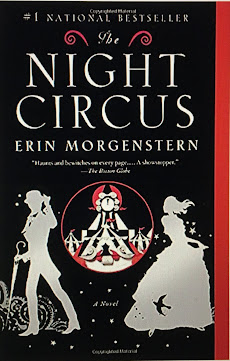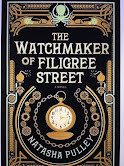Five Ways to Revive That Story You Can’t Seem to Finish
by Theresa Gauthier
You’ve started that story idea that had you so excited you couldn’t wait to sit down at your keyboard. Racing through the first fifty to one hundred words, you felt you were in the zone. This was it. This was the idea you’d
hoped it would be. Then, after a few hours or a few days, maybe even a few thousand words, your prolific writing spurt ended. Each new word is an exercise in frustration as you struggle to put together a complete well, thought out sentence.
What now?
Your interest is waning. You’re tempted to abandon the thing all together, but abandoning the project is the last thing you want to do. You’ve already put a lot into it. How do you revive your interest? How do you harness that bottomless well of creativity that somehow seems to have fallen short of bottomless?
Here are some ideas.
1. Write what won’t happen.
Chances are you have some idea where things are going. As an exercise, write a scene that you’re sure would never happen. It can be anything from the craziest idea your tired brain can conjure to something just a bit off course. You’re writing a sci-fi saga of the future? What would happen if some major piece of tech stopped working? You’re writing a romance? What would happen if the protagonist developed a crush on someone else? Maybe you’re writing historical fiction. What would happen if your protagonist became enmeshed in an event from real history—the moon landing? The Berlin Wall coming down? Meeting an historical character—anyone from Harriet Tubman to Albert Einstein? Desmond Tutu to John Lennon? Queen Victoria to Jackie Robinson? It’s not that you’d use any of this scenes—although if they turned out to be of particular inspiration, you could. The point of the exercise is to get yourself to consider new things from your characters’ perspectives—or from some other character’s perspective. If you find it impossible, then maybe the idea didn’t have the legs you thought it would.
2. Write from an outsider’s POV.
Your characters aren’t cooperating. Maybe you don’t know them as well as you thought you did. Try writing what an outsider would see. Create someone on the periphery of the action. What does this new character see? How does he, she, they, interpret what’s happened to your protagonist so far? Would it be a significant difference to how the protagonist interprets things? Does the outsider see your protagonist as altruistic? Tragic? Villainous? Pathetic? Clueless? Would a different outsider see something else? Perhaps a character that sees the protagonist every day over a period of weeks might see some sort of change. Try a barista at the protagonist’s favorite coffee shop, or a server at the protagonist’s favorite restaurant. It might be a professor at the protagonist’s college, or even a colleague at the office. You could even do a series of vignettes showing you the differences in opinions based on how each of these outsiders view the world. You could learn a lot about your story, the world you’ve created, and about the characters who live there.
3. Write a more extensive background on your character—or change something significant in the detailed background you’ve already created.
Some writers dive in and start writing without bothering to work out anything beyond first name, last name, and occupation; others have detailed notes telling them what their characters had for breakfast and who their best friends were in 4th grade. Whatever your reality, turn it upside down or inside out. You know nothing about the protagonist beyond name and occupation? Sit down with a list of questions. Educational background including names of schools and years attended. Best friends at each stage of life. Peanut allergy? Broken home? Allergic to cats? Broke an arm at the age of 12? Whatever it is, the more you know about the characters, the more real the characters will feel to you—the better you’ll be able to anticipate how the plot line will impact the character’s situation.
If you’ve already done all the homework—you know everything about the character from favorite TV show when he/she/they were nine years old to favorite book to first crush and family tree going back ten generations—change something. It can be something significant or not. Is your protagonist living with a phobia of the water? What if instead, that phobia was a love of the water? Living on a houseboat, in a beach house, surfing, swimming, scuba diving—what light does that shed? Could the character have once been like this and something changed? What? Why? Maybe the character has the phobia and still loves the water and still does the scuba-surfing-swimming. Does your character prefer to go to the local fast food joint for dinner? Take that fast food fan and stick him/her/them in the kitchen. Does your character come home every day with a sack of groceries and cook something amazing from a tutorial on the Food Network App? Take away that option and see what happens. At the very least, you’ll have some fun learning about your character.
Your story takes place in a rural small town. What if it were a big city? Maybe you’ve set it on a college campus. What if it were an office building instead? Closed communities come in all sorts of shapes and sizes. An office building. A crosstown bus on the morning commute. Each offers its own unique challenges to telling a good story, but each can be fertile ground for creating reactions, stimulating creativity, and pushing you out of your comfort zone. If it inspires more research, that could be a good thing. Maybe you want to try the story in a vacation spot—but where the protagonist is working and watching others being on vacation. Maybe it’s a good idea to set the story outside the characters’ usual locations. Put your bank teller in a supermarket. Put your kindergarten teacher in an amusement park. Change of location could generate all sorts of new possibilities for you.
5. Turn your protagonist into a villain and your villain into a protagonist.
Turning the story around like this could give you insight into why your characters are behaving the way they are. Have them do the One Thing they would never do. Have them perceive the world from a different angle than you’ve already imagined they do. The best villains don’t see themselves as villains. Heroes are the same. What would it take to turn the tables on your characters and how would this affect your story? What is your villain’s goal? What would it take for that goal to be viewed in a positive light? What is your protagonist’s goal? Is it possible to see that goal as a Bad Thing?
Examining your story and your characters from an opposing viewpoint could breathe more life into your story.








Comments
Post a Comment